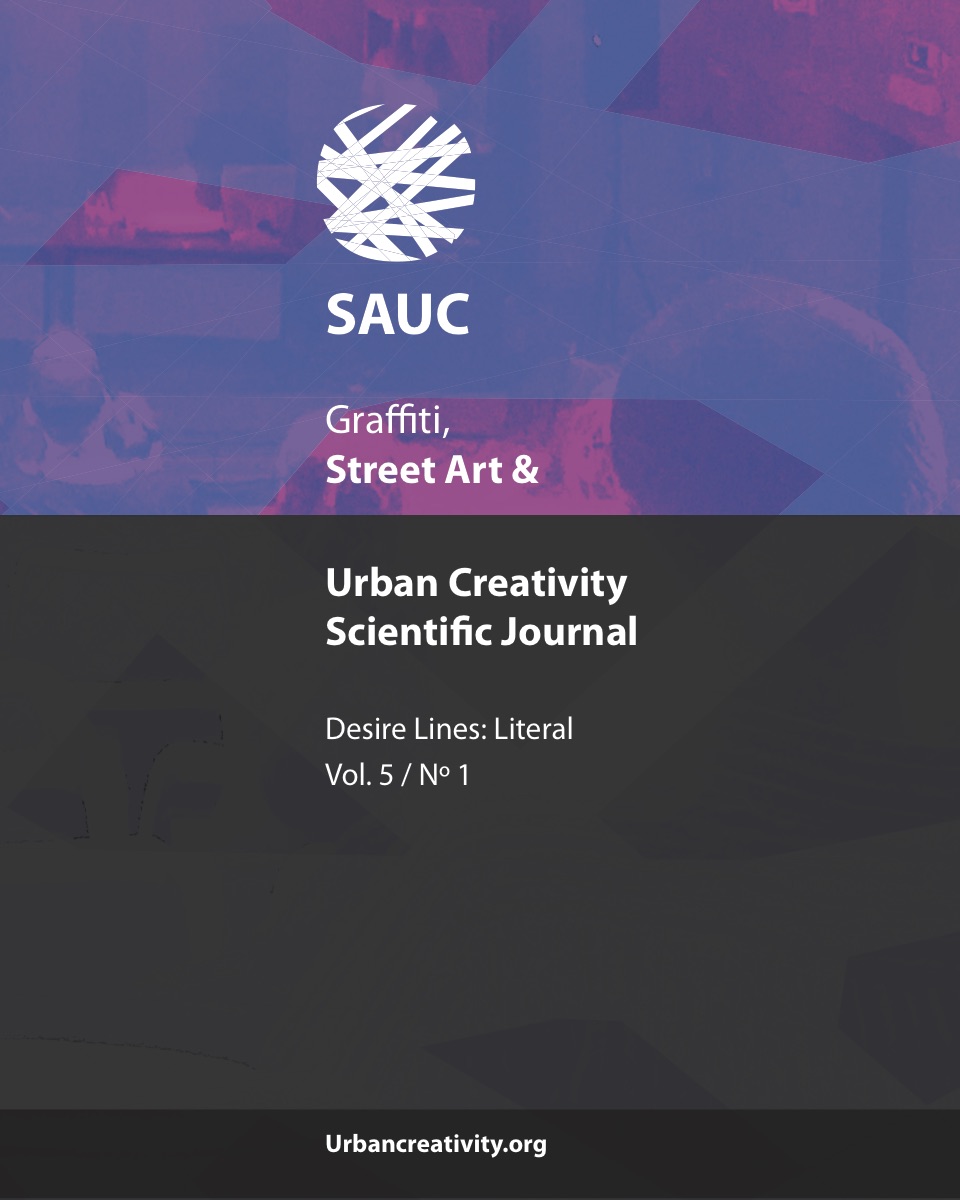There and Back Again: Redistributing Visibility between the Virtual and Real Alleys of Graffiti
DOI:
https://doi.org/10.25765/sauc.v5i1.186Keywords:
graffiti, street art, Rancière, Banksy, subversivenessAbstract
Blu’s 2008 short film Muto is probably the most ambitious celebration of the intimate relationship connecting new-media technologies and street art.1 Critically acclaimed and viewed almost 12 million times on YouTube, this award-winning video is a stop-motion animation of hundreds of murals that the Italian street artist painted in different cities across the globe.2 Blu’s surreal figures invade the city and their gestures are experienced and appreciated through computer screens and mobile phone displays.
When looking at street art’s relationship with new media, Muto is hardly an exception. Technology has played a crucial role in making the street art movement a popular genre. The availability of cheap digital cameras and the possibility of photo publishing on social media have transformed graffiti – the original and most radical form of street art – from an esoteric practice into a global phenomenon. Social networks have made available to internet users a constantly expanding gallery of street artworks. Communicating technologies have then radically changed how we engage with this art form. We primarily appreciated street artworks as and through photographs, in ways suggesting epistemic and ontological primacy of the “reproduction” over the “original.” For its constitutive linked with the city, street art’s digital media revolution had then affected how we perceive, experience, and conceptualize public places.
In this paper, I argue that post-Internet street art has significantly re-shaped urban space, questioning dominant spatial hierarchies in politically subversive ways. Street art questions what Jacques Rancière calls the “distribution of the sensible” by making visible what usually remains unseen. It does so by deploying tactics thriving on the interplay between material and digital reality. Scholars have largely overlooked this link between the virtual and the real alleys of graffiti. Street art exists in between material and virtual reality, showing the conceptual and practical impossibility of their neat separation. Today’s public space is produced and negotiated also in binary code. Section 2 discusses the subversive nature of graffiti and street art. Section 3 examines writers’ and street artists’ use of communication technology and how this affects the practices and their link with the city.
1 “Blu, Muto, 2008.,” artforum.com, accessed May 1, 2017, https://www.artforum.com/video/mode=large&id=24319.
2 Vanessa Chang, “Animating the City: Street Art, Blu and the Poetics of Visual Encounter,” Animation 8, no. 3 (2013): 215–33, https://doi.org/10.1177/1746847713503280; Brad Yarhouse, “Animation in the Street: The Seductive Silence of Blu,” Animation Studies Online Journal 8 (2013), https://journal.animationstudies.org/brad-yarhouse-animation-in-the-street-the-seductive-silence-of-blu/; Pietro Rivasi, “Megunica,” Garage, 2007.
Downloads
Global Statistics ℹ️
|
173
Views
|
52
Downloads
|
|
225
Total
|
|
Downloads
Published
How to Cite
Issue
Section
License
Those authors who publish in this journal accept the following terms:
-
Authors retain copyright.
-
Authors transfer to the journal the right of first publication. The journal also owns the publishing rights.
-
All published contents are governed by an Attribution-NoDerivatives 4.0 International License.
Access the informative version and legal text of the license. By virtue of this, third parties are allowed to use what is published as long as they mention the authorship of the work and the first publication in this journal. If you transform the material, you may not distribute the modified work. -
Authors may make other independent and additional contractual arrangements for non-exclusive distribution of the version of the article published in this journal (e.g., inclusion in an institutional repository or publication in a book) as long as they clearly indicate that the work was first published in this journal.
- Authors are allowed and recommended to publish their work on the Internet (for example on institutional and personal websites), following the publication of, and referencing the journal, as this could lead to constructive exchanges and a more extensive and quick circulation of published works (see The Effect of Open Access).













